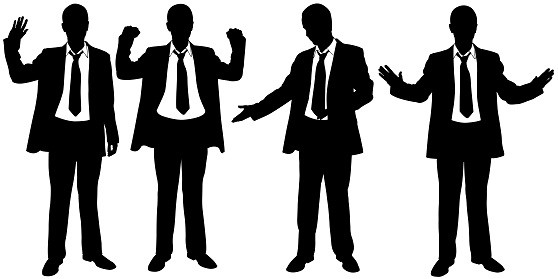IMPORTANCE OF BODY LANGUAGE IN HUMAN COMMUNICATION

блог
If speech is the language of our consciousness, then facial expressions, gestures and body languages are the language of the subconscious. The subconscious does not know how to lie, on the contrary - it, like a child, always tells the truth. When we transmit information in words, our subconscious mind communicates in a completely different language. Knowing this language, you can see many features, character traits and mood of the interlocutor.
The relevance of my article is due to the fact that not all types of communication are based on speech, psychologists have found that in the process of communicating people from 60 to 80% of the message is delivered by non-verbal means of expression: gestures, facial expressions, eye movements, handshakes, voice level, etc., and only 20-40% of the information is transmitted using verbal words.
The peculiarity of body language is that its manifestation is caused by the impulses of our subconscious, and the lack of the ability to fake these impulses allows us to trust this language more than the usual, verbal way of communication. Body language can be forged, but only for a very short time, because soon the body will involuntarily transmit signals that contradict its conscious actions.
The transmission of information is possible only through signs, or rather sign systems. There are several sign systems that are used in the communication process, and they can be used to classify communication processes. In a rough division, there are verbal and nonverbal communications that use different sign systems. Verbal communication uses human speech, a natural sound language, as a sign system. Nonverbal communication is one of the means of interpersonal influence and regulation of relationships, creates an image of a communication partner, acts as a clarification, advance of the verbal message. Peter A. Andersen explains the differences between verbal and nonverbal communication:
“Nonverbal communication has a distinct history and serves separate evolutionary functions from verbal communication. For example, nonverbal communication is primarily biologically based while verbal communication is primarily culturally based. This is evidenced by the fact that some nonverbal communication has the same meaning across cultures while no verbal communication systems share that same universal recognizability.” (Mountain View, CA: Mayfield, 1999).
Psychologists have found that in the process of interpersonal communication, from 60 to 80% of information about the interlocutor we draw from the so - called non-verbal means of communication-gestures, facial expressions, body movements, intonation, and the choice of a certain distance between partners. A person controls their gestures and postures significantly less than their words; this is why they can tell you more about them than direct statements.
Nonverbal language can tell a lot about the inner state of even a stranger, not to mention business partners, regular interlocutors and colleagues. Goldin-Meadow explains that gestures can be cultural neutral allowing people from diverse cultures to communicate effectively using a gesture system (p.38).
Like other languages, nonverbal each nation has its own language, and the same expressive gesture can have completely different meanings for different peoples. Even your costume and its color can carry ambiguous information in different parts of the world. If in Holland you turn your index finger at your temple, implying something stupid, then you will not be understood. There, this gesture means that someone has said a very witty phrase. Speaking of himself, the European points to his chest, and the Japanese to his nose. In some African countries, laughter is an indicator of surprise and even confusion, and not a sign of amusement at all.
The Italians and the French are known for that they have to rely on your hands when you need to strongly reaffirm the words or give the interview a more informal nature. The danger is that hand gestures are perceived differently, depending on which country we are currently in. It is believed that the most expressive body language in the French. When a Frenchman wants to say that something is the height of refinement, he puts the tips of three fingers together, brings them to his lips and, raising his chin high, blows a kiss, and if the Frenchman rubs the base of his nose with his index finger, he warns “something is wrong here”, “careful”. This gesture is very similar to the Italian tapping of the index finger on the nose, whether on the right or on the left; it means: "beware”," danger ahead”, "it looks like they are plotting".
Most often, the use of nonverbal means of communication occurs unconsciously or involuntarily, and others learn about us based on how they themselves interpret nonverbal communication. It is clear that their interpretation can be very different from how we perceive ourselves. Therefore, in the modern world, nonverbal means of communication are taken very seriously, their meaning is studied and even taught how to use them correctly.
So I can say that body language is an inseparable part of our life. It is present in all spheres. We use body language, often without noticing. It is innate in our genes and has been passed down from generation to generation.
Gestures that are inherent to one person may not be familiar to another, so you need to be very careful when using gestures in practice. Before you go to any country, you need to know what gestures are acceptable for this country.
In everyday life, knowledge of body language helps in the area of personal relationships. By understanding the other person's gestures, we will be able to behave correctly in a given situation.

